
Ham is popular at Christmas in many parts of the world — including Spain, Mexico, Peru, the Philippines — whether it’s part of the main course, an appetizer, or a side. It’s an English tradition that started with the Germanic tribes, who wanted to appease Freyr, the Norse god of fertility, harvest, and wealth, to whom wild boar was said to be the preferred sacrifice.
Americans eat about 318 million pounds of ham between Thanksgiving and New Year’s. Glazed ham is especially popular around Christmas, which mean people hosting parties are probably already looking into recipes.
Ham is cut from the rump of the pig or the back thigh. How long it takes to cook depends on the type of ham you’re making, according to Anthony Alexander, a New York City-based chef. Country ham is cured, rubbed in salt, hung and allowed to dry. “This time-consuming process creates complex flavors that make this ham by far the best. It also requires more work to cook,” Alexander says.
A festive-looking glazed ham can be the main attraction at dinner, but it’s easy to get this classic holiday food wrong if you forget a few simple steps.
Recipes usually list the basic steps for preparing a dish, but it’s important to know what not to do as well. Being on ham duty can be overwhelming, especially if this is your first time cooking it. One mistake can lead to others. And it all starts with the kind of ham you choose.
Click here to see the worst mistakes you can make cooking ham for Christmas
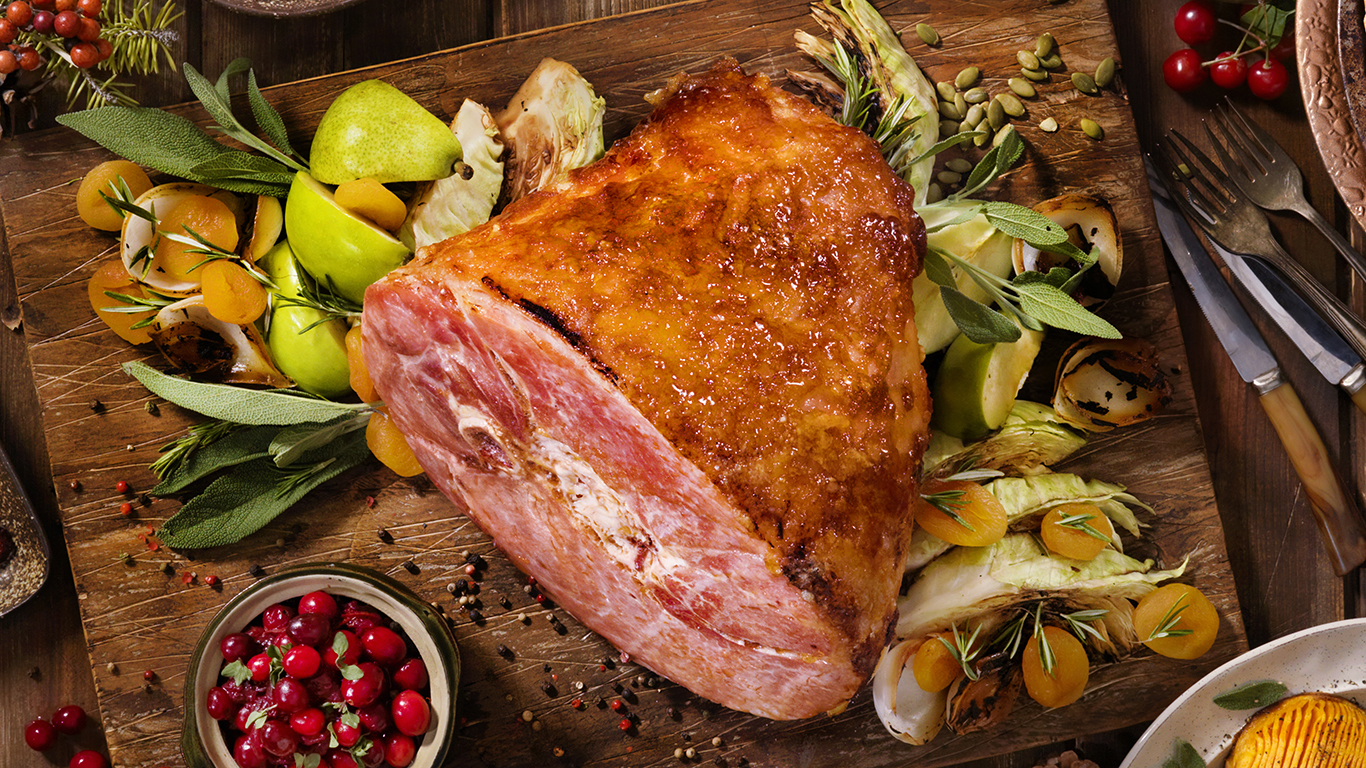
1. Getting country ham
There are two main type of hams — country and city. Technically, there is nothing wrong with getting the former, but it takes much longer to cook and it’s a lot more complicated, which mean more possibilities of making big mistakes, according to Alexander. A city ham is smaller, placed in salt water, and par-cooked, he explained. “This is easier to cook, less expensive and easier to find.” It may not be as flavorful as the country ham, but “it is still very good and what most people use when they cook it for the holidays.”
[in-text-ad]
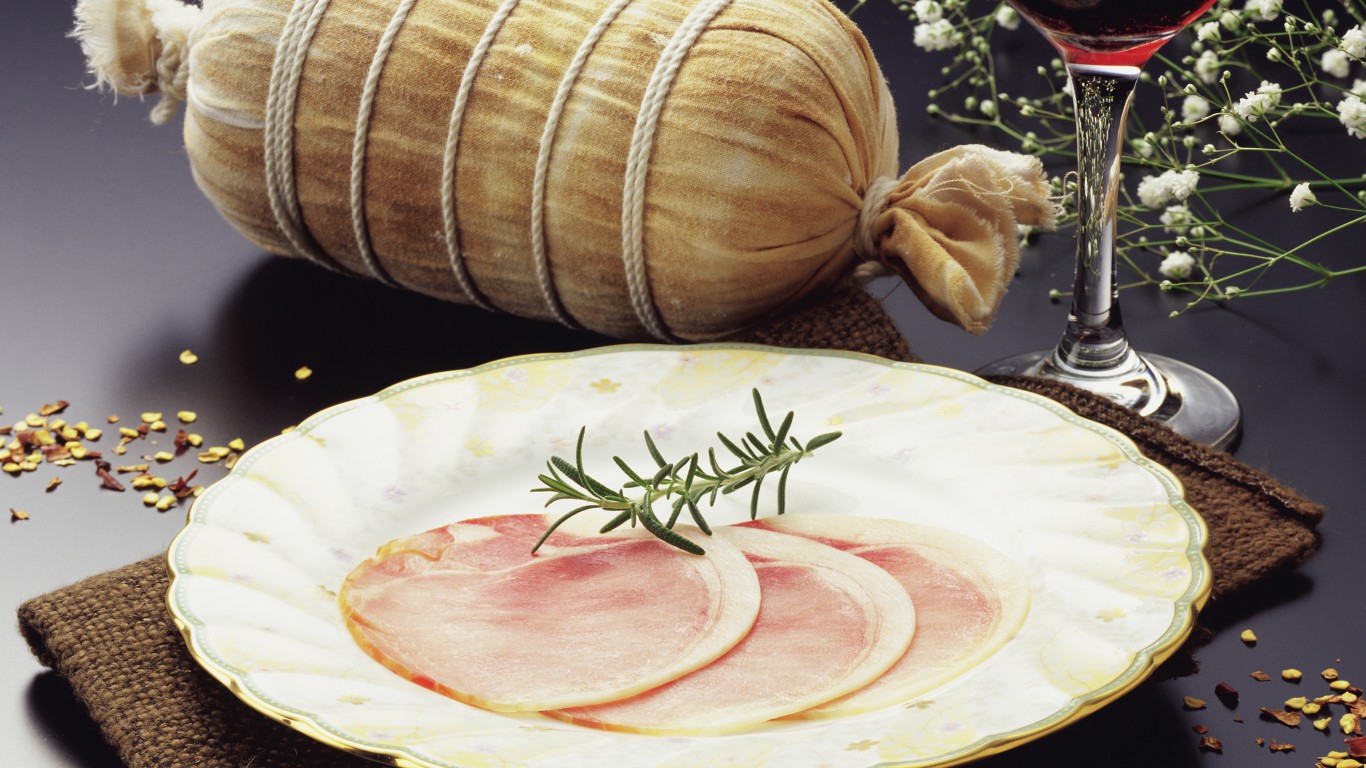
2. Choosing a boneless ham
Some people are tempted to buy boneless ham because it seems convenient, but this is a mistake, Alexander warned. “Bone-in ham is the only way to go.” This is because, he explained, bones make meat taste better as most of the flavor is retained. A ham without the bone means it has more than likely been heavily processed by grinding and then molded to look like ham again, according to Alexander. “Those taste terrible.”

3. Disregarding the ingredients label
Don’t forget to look at the ingredients label when you buy your ham. Ham is labeled based on its water-to-protein content. “If it is 20.5% protein and no added water, it is labeled ‘Ham,'” Alexander said, whereas ham with 18.5% protein is labeled “Ham in its natural juices.” “These are often par-cooked.” Alexander said. And these are the two you want, especially if you are a beginner . Don’t go for “Ham water added” or “Ham and water product.” The latter means that the ham has been deboned, ground and reconstituted. “That is terrible and should be avoided,” Alexander said.
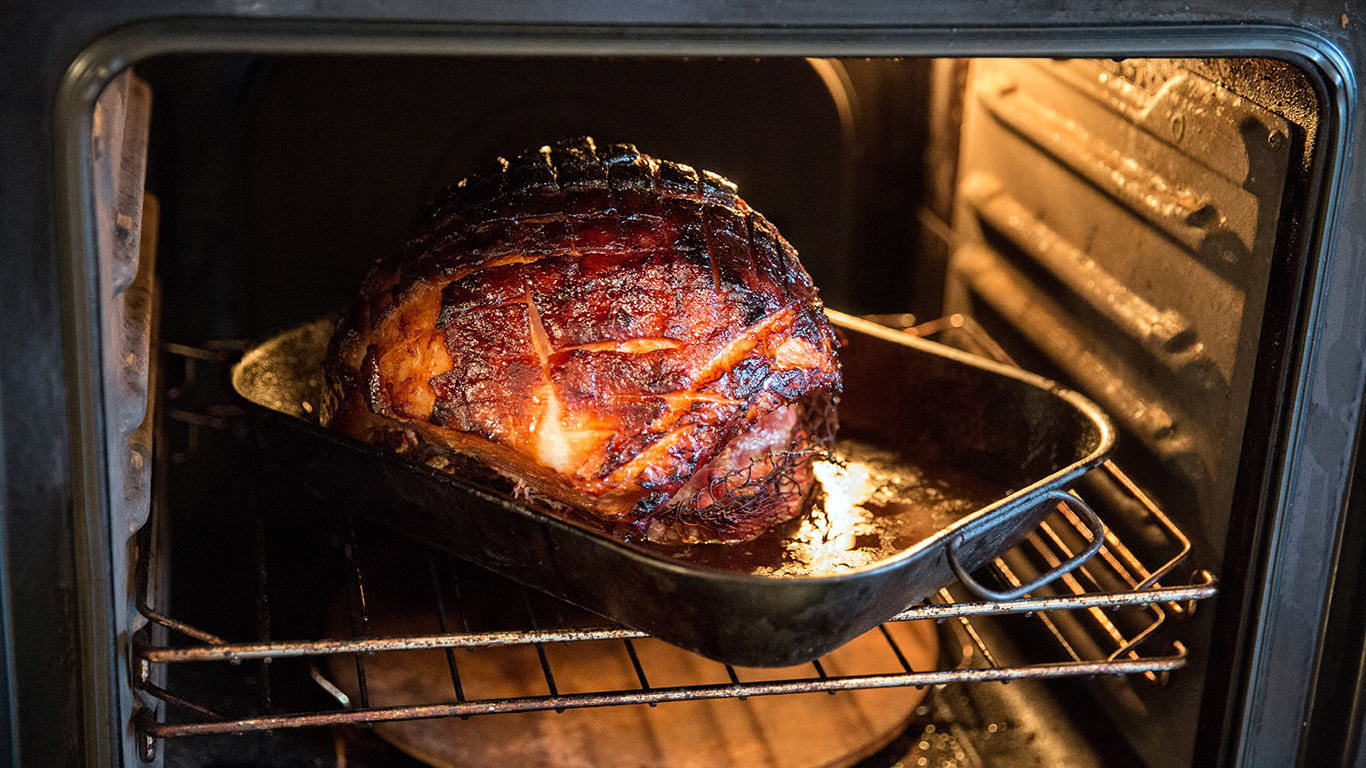
4. Not covering the ham
You shouldn’t cook ham uncovered because all of the moisture in the meat will evaporate leaving it dry and tasteless. “A double layer of aluminum foil in the form of a tent works just fine,” Alexander said. Keep it on until it’s time to glaze.
[in-text-ad-2]
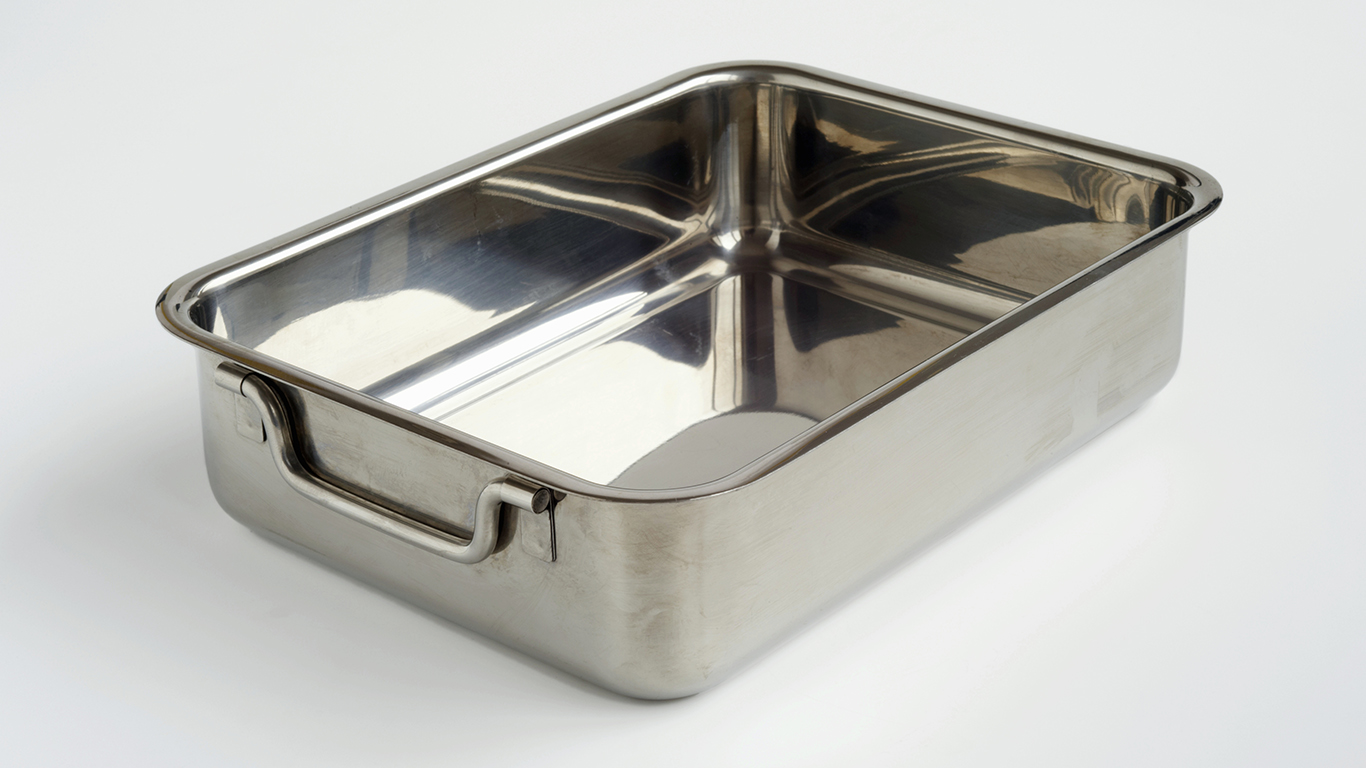
5. Forgetting to line the pan with oil
“If you are worried about it sticking, a simple nonstick spray should suffice,” Alexander said. “However, I frequently cook it in a sweet sauce that I baste it with.” This will work if you don’t need or want to use oil. Basting is a cooking method used to add moisture to food, especially meat.
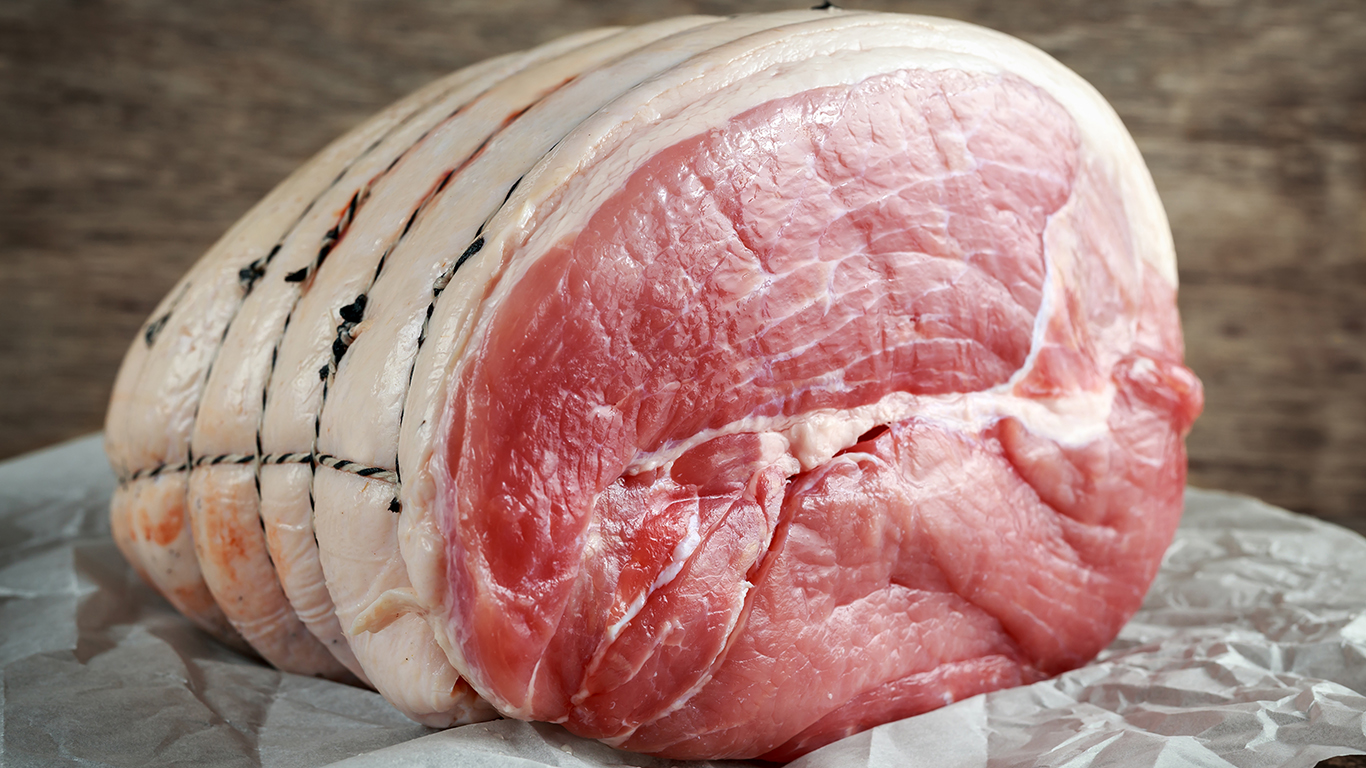
6. Transferring straight from fridge to oven
You must bring the ham to room temperature before putting it in the oven because it will cook evenly, Alexander noted. Otherwise you’ll end up with ham looking great on the surface, because that part warmed up quickly, and undercooked meat on the inside. “This is a good step for any roasted meat.” When it comes to food safety, use common sense and basic food safety measures, like washing hands and using just one cutting board.
[in-text-ad]

7. Hurrying the cooking process
You don’t want to take less time than suggested in the recipe you’re using. Cooking at a low temperature and slowly is the only way to make sure the ham won’t turn out dry, according to Alexander. “The city ham is par-cooked. Using a heat as low as 250 degrees F and bringing it to a final temp of 140 degrees will assure it is not dry,” he said.
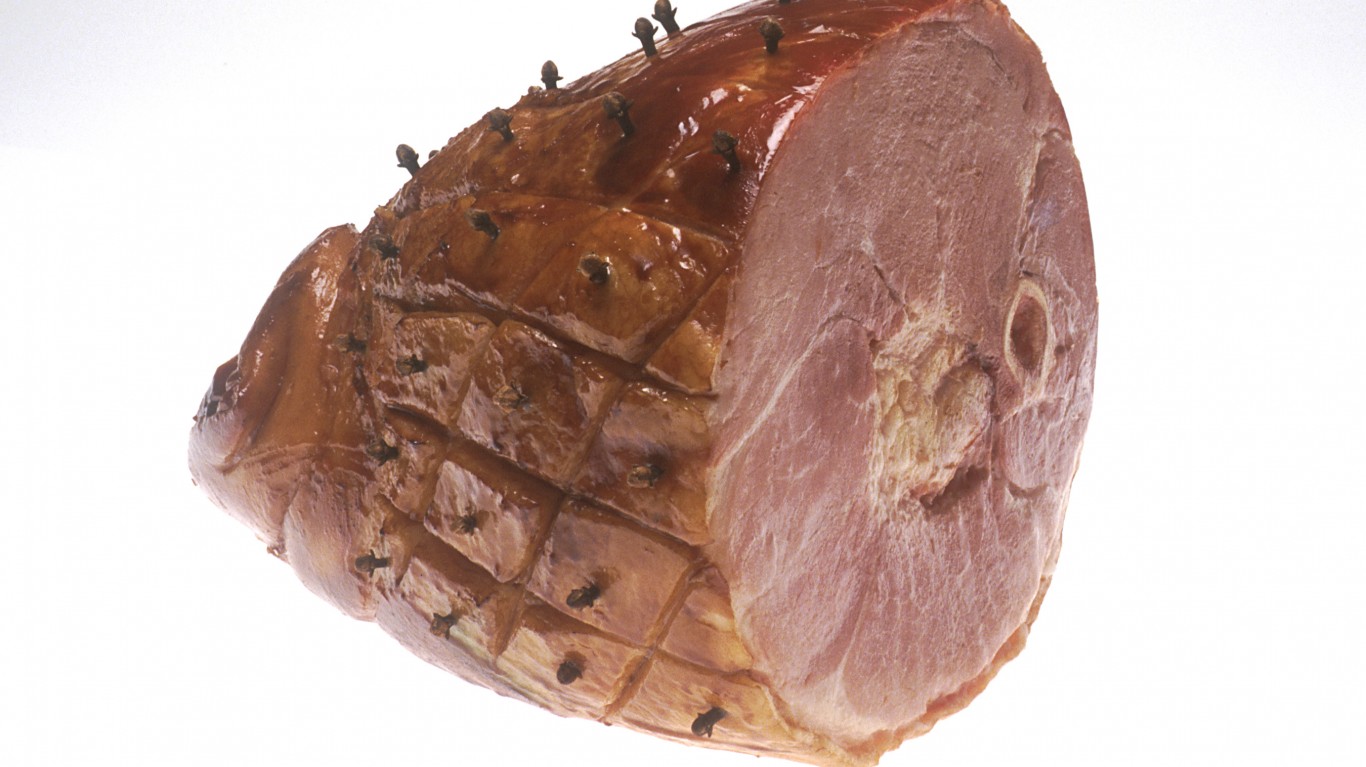
8. Forgetting to score the skin
It’s common for people to forget to score the skin, Alexander noted. Scoring is the cutting a crisscross pattern into the skin and fat so it can pour off when melted. “It is important so that it not only allows the flavor of whatever you are adding to penetrate more into the meat, it also renders out fat.”
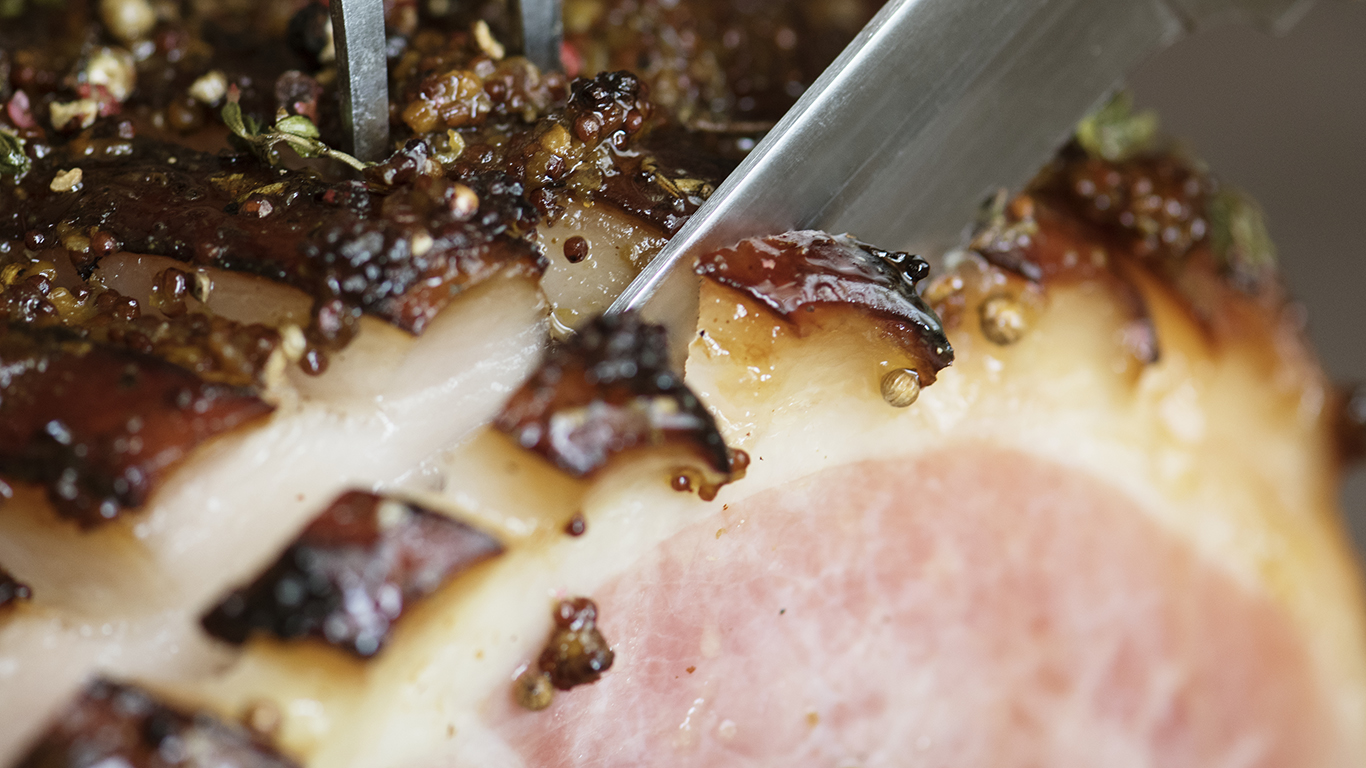
9. Scoring improperly
The right way to score the skin is to cut 1/4 of an inch into the meat, according to Alexander. Using the classic diamond pattern is ideal, he added. “After you reach the temp [I’d] would remove the skin as it is rubbery, unless you want to take the time to raise the temp to 400 degrees and make the skin crispy.” This makes the ham very good but it’s not traditional, he noted.
[in-text-ad-2]

10. Placing the thermometer at the wrong place
The best place to put the meat thermometer to accurately measure the temperature is near the bone because the meat is thickest there, Alexander noted. “I like 250-275 degrees F [oven temperature] until the internal temp is 140 degrees F.” Don’t wait for it to go much higher, especially if the ham is already pre-cooked. “The meat bone should wobble and come out of the ham,” Alexander said.
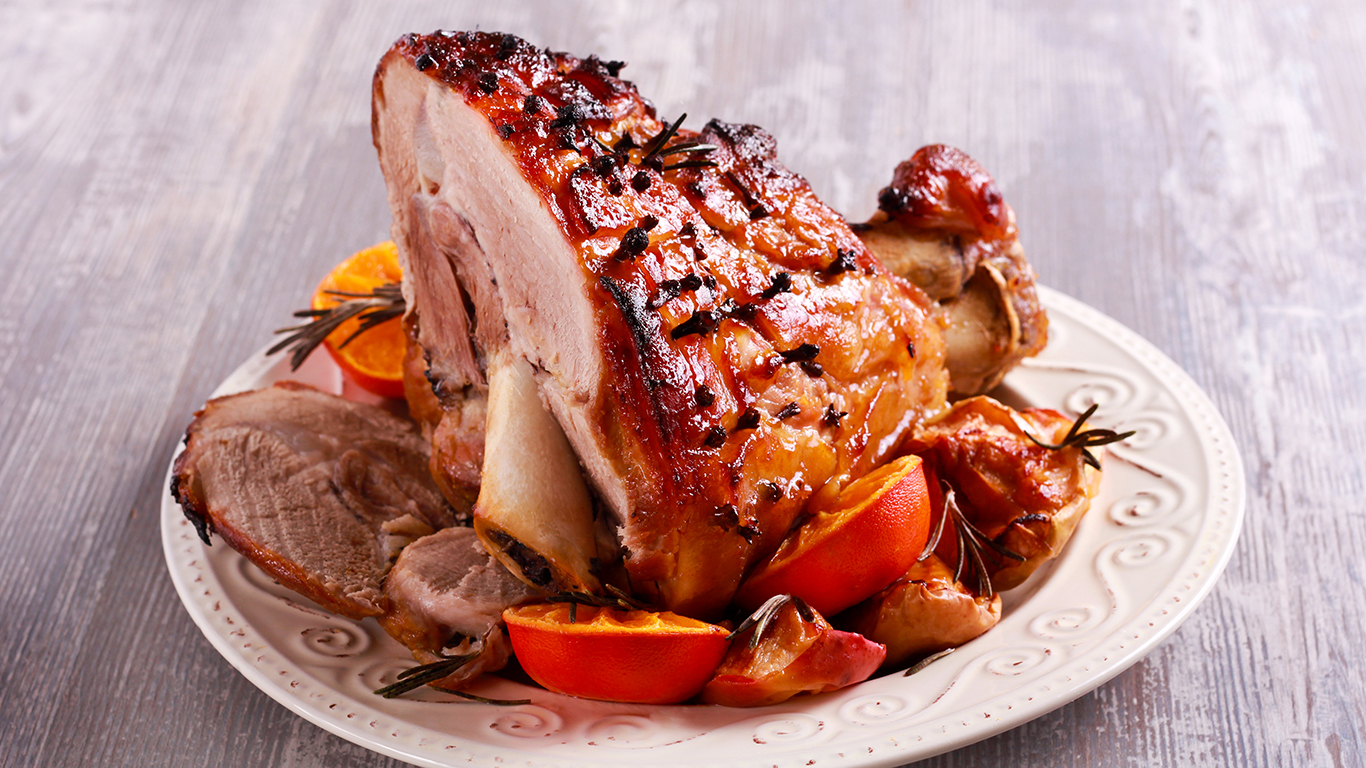
11. Glazing the wrong way
You don’t have to poke the ham if you score it properly, Alexander said. A big mistake is to not glaze in the first place. It’s not as tasty and it certainly won’t look appetizing. But glazing is not easy to do. “I add the liquid and sugar at the start and baste it as I go,” Alexander said. “My favorite is pineapple, honey and mustard. While the ham is resting, take the liquid, put it in a pot and reduce it until it is syrupy. You can do a dry rub by putting mustard on the ham and placing brown sugar and crushed Nilla Wafers on it after it’s done cooking, and put it back in the oven at 400 degrees F for 20 minutes for a crust.”
[in-text-ad]
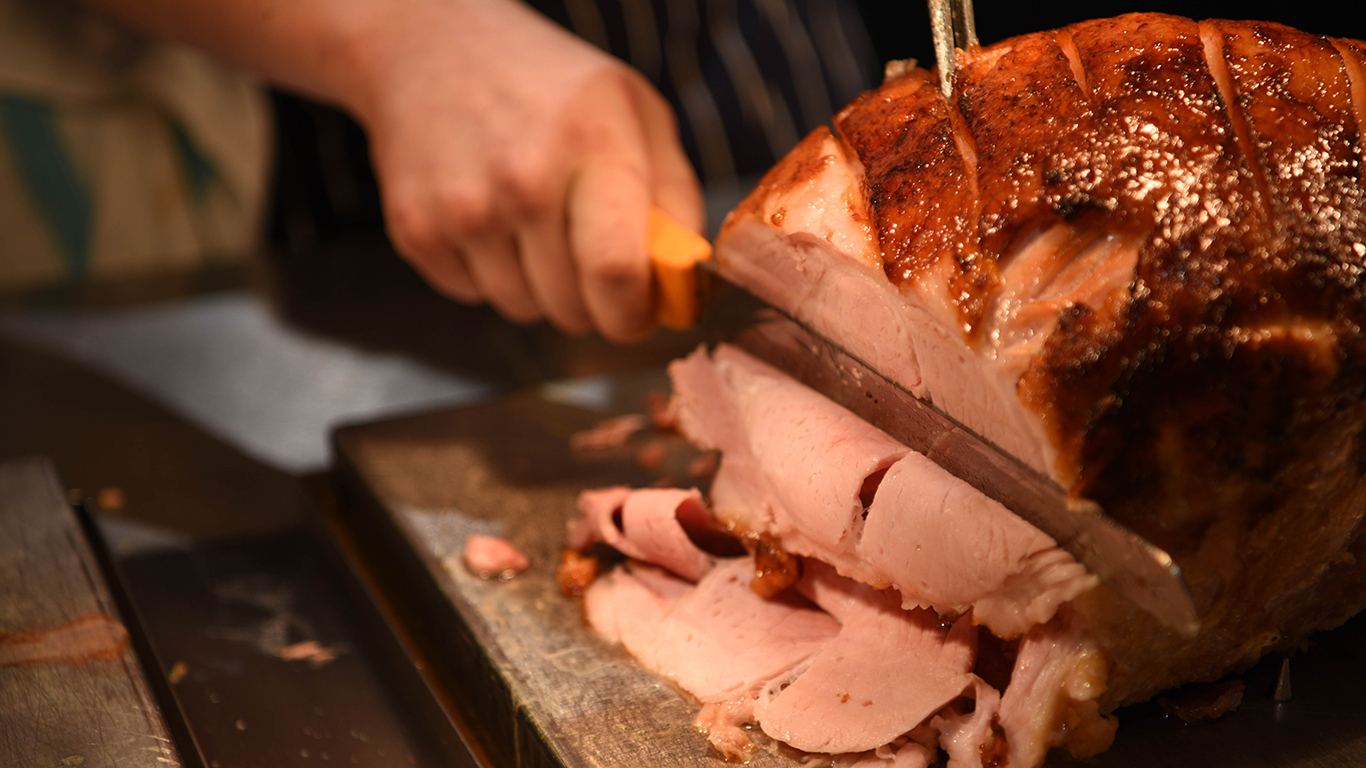
12. Not letting it rest
It’s tempting to dig in as soon as you take the ham out of the oven, but you should let it rest for 45 minutes, Alexander noted. Otherwise, it will lose some of its moisture. If you cut the meat right away, the juices will flow out, leaving it dry and tough.
Is Your Money Earning the Best Possible Rate? (Sponsor)
Let’s face it: If your money is just sitting in a checking account, you’re losing value every single day. With most checking accounts offering little to no interest, the cash you worked so hard to save is gradually being eroded by inflation.
However, by moving that money into a high-yield savings account, you can put your cash to work, growing steadily with little to no effort on your part. In just a few clicks, you can set up a high-yield savings account and start earning interest immediately.
There are plenty of reputable banks and online platforms that offer competitive rates, and many of them come with zero fees and no minimum balance requirements. Click here to see if you’re earning the best possible rate on your money!
Thank you for reading! Have some feedback for us?
Contact the 24/7 Wall St. editorial team.
 24/7 Wall St.
24/7 Wall St.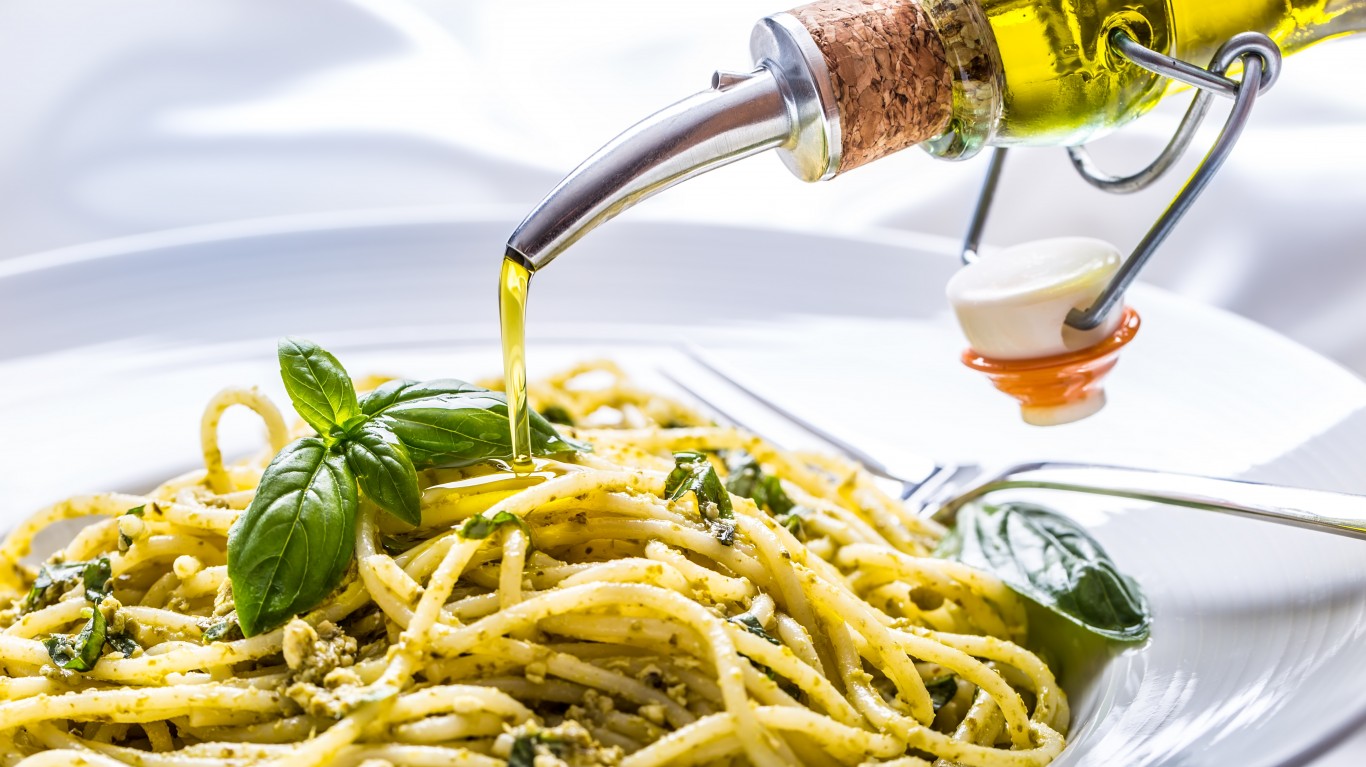 24/7 Wall St.
24/7 Wall St.


